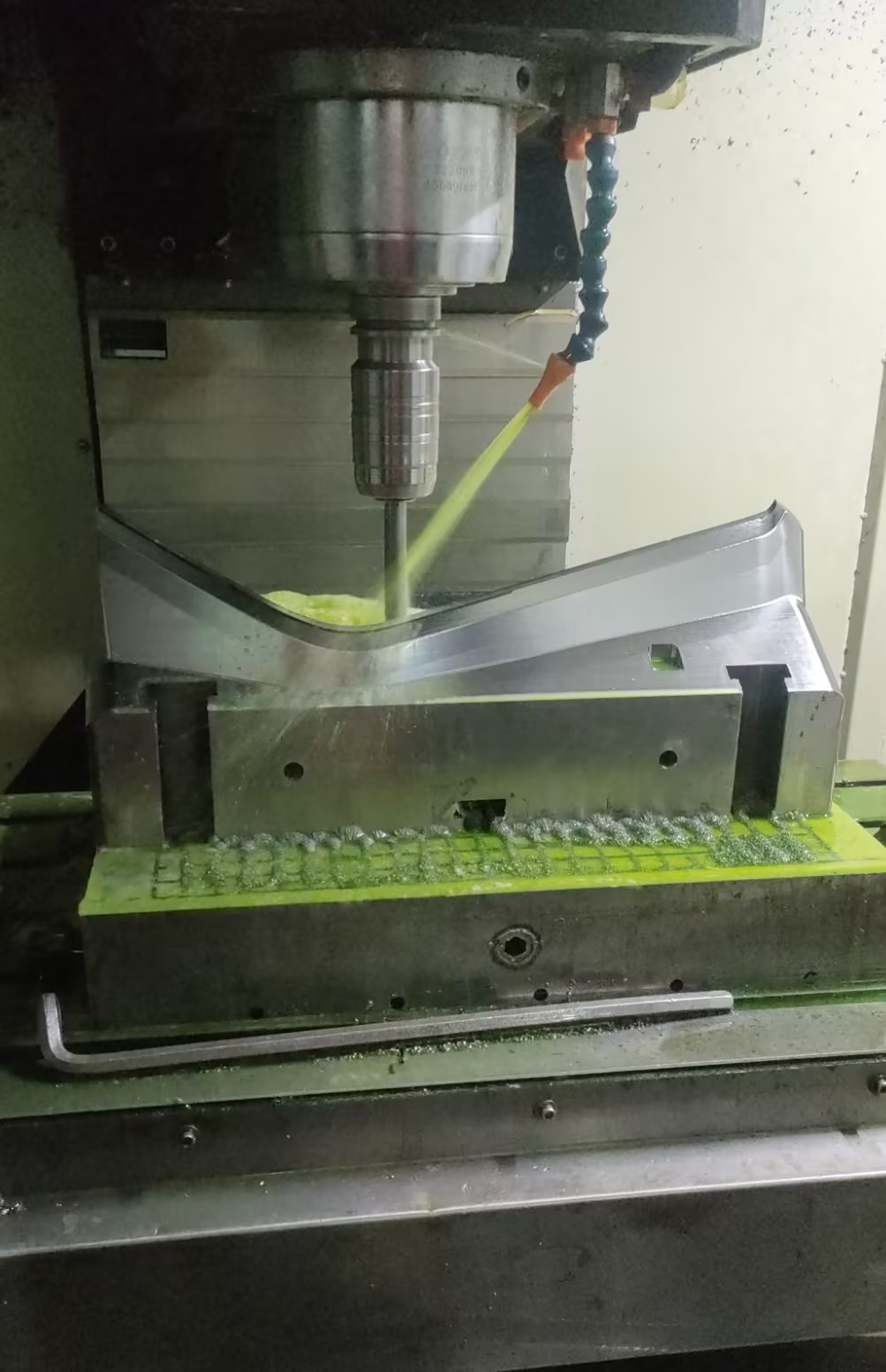With the rapid development of the manufacturing industry, plastic molds are an indispensable tool in plastic molding processing. The proportion of the total mold output is increasing year by year. With the development and continuous production of high-performance plastics, the types of plastic products are increasing. The use is constantly expanding, and the products are developing towards precision, large-scale and complexity. Molding production is developing towards high speed, and the working conditions of molds are becoming more and more complicated.
1) Wear and corrosion of cavity surface
The plastic melt flows in the mold cavity with a certain pressure, and the solidified plastic parts come out of the mold, which will cause friction on the molding surface of the mold and cause wear. The root cause of plastic mold wear failure is the friction between the mold and the material. However, the specific form and wear process of the wear are related to many factors, such as the pressure, temperature, material deformation speed and lubrication condition of the mold during the working process.
When the material and heat treatment used in the plastic mold are unreasonable, the surface hardness of the cavity of the plastic mold is low and the wear resistance is poor, which is manifested as: the size of the cavity surface is out of tolerance due to wear and deformation; , the surface quality deteriorates.
Especially when using solid material to enter the mold cavity, it will aggravate the wear of the cavity surface. In addition, during plastic processing, components such as chlorine and fluorine are heated and decomposed to produce corrosive gases HC1 and HF, which cause corrosion and wear on the cavity surface of the plastic mold, resulting in failure.
If there is wear damage at the same time as wear, the coating or other protective layer on the surface of the cavity is damaged, which will promote the corrosion process. The two kinds of damage interact to accelerate the corrosion-wear failure.
2) Plastic deformation failure
Pressure and heat on the surface of the plastic model cavity can cause plastic deformation failure, especially when small molds work on large-tonnage equipment, it is easier to produce overload plastic deformation. The strength and toughness of the material used in the plastic mold are insufficient, and the deformation resistance is low; another reason for the failure of plastic deformation is that the hardened layer on the surface of the mold cavity is too thin, the deformation resistance is insufficient, or the working temperature is higher than the tempering temperature, resulting in phase change softening , so that the early failure of the mold.
3) break
The main reason for the fracture is structural stress, thermal stress or insufficient tempering due to structure and temperature difference. At the service temperature, the retained austenite is transformed into martensite, causing local volume expansion, and the microstructure generated inside the mold caused by stress.
The working conditions of plastic molds are different from those of cold stamping dies. Generally, they must work at 150°C-200°C. In addition to being subjected to a certain pressure, they must also bear the influence of temperature. The same mold will have multiple failure modes, and even multiple damages may occur on the same mold. From the failure modes of plastic molds, it can be seen that it is very important to choose plastic mold materials and heat treatment reasonably, because they are directly related to the service life of the mold. Therefore, steel for plastic molds should meet the following requirements:
1) Heat resistance
With the emergence of high-speed molding machinery, plastic products run faster. Since the molding temperature is between 200-350°C, if the plastic fluidity is not good and the molding speed is fast, the molding surface temperature of the mold part will exceed 400°C in a very short time. In order to ensure the accuracy and small deformation of the mold during use, the mold steel should have high heat resistance.
2) Sufficient wear resistance
With the expansion of the use of plastic products, it is often necessary to add inorganic materials such as glass fiber to enhance the plasticity. Due to the addition of additives, the fluidity of the plastic is greatly reduced, resulting in wear of the mold, so the mold is required to have good abrasion resistance.
3) Excellent machinability
In addition to EDM, most plastic molding molds require certain cutting and fitter repairs. In order to prolong the service life of the cutting tool, the work hardening is small during the cutting process. In order to avoid mold deformation and affect accuracy, it is hoped that the machining residual stress can be controlled to a minimum.
4) Good thermal stability
The shape of plastic injection molded parts is often complex and difficult to process after quenching, so materials with good thermal stability should be selected as much as possible.
5) Mirror surface processing performance
The surface of the cavity is smooth, and the molding surface is required to be polished to a mirror surface, and the surface roughness is lower than Ra0.4μm, so as to ensure the appearance of the plastic pressed parts and facilitate demoulding.
6) Heat treatment performance
Among the mold failure accidents, the accidents caused by heat treatment are generally 52.3%, so that heat treatment occupies an important position in the entire mold manufacturing process, and the quality of the heat treatment process has a greater impact on the quality of the mold. It is generally required that the heat treatment deformation is small, the quenching temperature range is wide, the overheating sensitivity is small, especially the hardenability and hardenability are large.
7) Corrosion resistance
During the forming process, corrosive gas may be released and decomposed by heat to produce corrosive gases, such as HC1, HF, etc., which corrode the mold, and sometimes the mold is corroded and damaged at the air flow channel mouth, so the mold steel is required to have good corrosion resistance.





